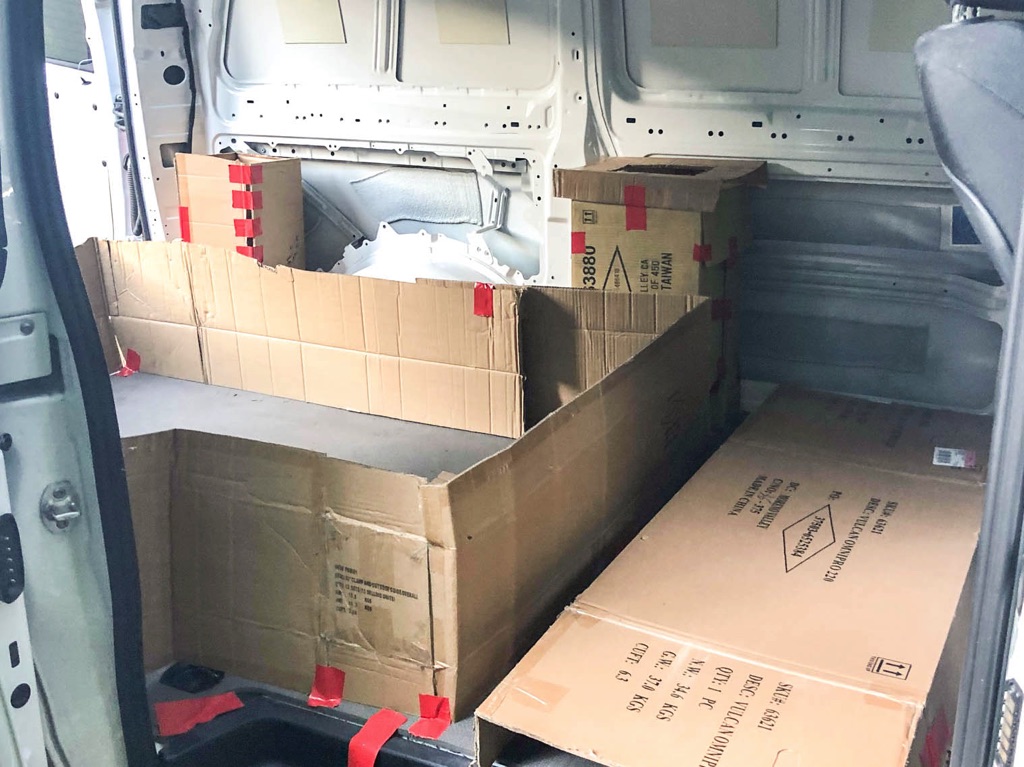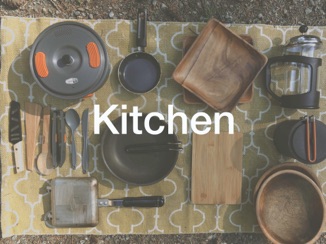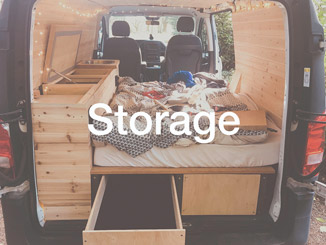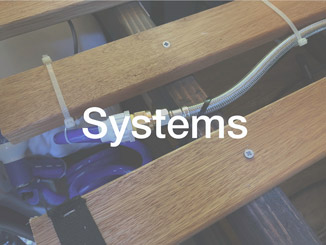So you found your ride. What’s next?
The next step is to begin brainstorming ideas and visions for the layout of your camper. We created a mood board to start collecting ideas in a visual and interactive way. There are tons of really great van-spiration resources on the internet, and lots of innovative, beautiful and creative setups. The best way to tackle a project like this, is to see what’s out there, start collecting ideas you like, and get inspired to create your own dream camper!
Deciding a layout can be pretty difficult, especially if you’re working with the limited space of a smaller van. There simply may not be enough space for everything you want, and you’ll probably have to compromise on what you can actually achieve. Our biggest piece of advice is to keep an open mind. What you thought of as a ‘must-have’ may leave you with having to compromise on other goals, so you should keep re-evaluating your priorities.
In order to play around with different layout ideas, we utilized a few different strategies:
List of Priorities
Apart from an inspiration mood board, we recommend starting with a list of your top priorities for your camper. Is interior storage more important, or would you rather have a spacious living space?
When you’re drowning in layout options, it helps to have this list to remind yourself of why you’re doing this in the first place, and what’s most important to you. Think through the kinds of trips you’ll want to do with your camper – the activities you’ll be doing, and the gear you’ll want to bring along with you.
Sketches
Yep, just simple sketches using ol’ fashioned pen and paper. We went through a bunch of these – they’re best for simply establishing and organizing general ideas. As you can see in the photo, one of our first drawings of the van looked very different from how it looks today – the wall is completely covered with storage cabinets!
Initially, we focused a lot on maximizing internal storage. But we soon realized that if we prioritize storage, we’ll end up with a claustrophobic space. So we cut back a bit on some of the storage and are SO glad we did. With the roof box and huge drawers below the bed, we always have enough space. However, cutting back on the internal storage did mean the fluffy full-length bathrobes must stay behind.
Cardboard Mock-Ups
Cardboard mock-ups are a great way to move those sketches and ideas into the real world. Gather up some large pieces of cardboard. Shouldn’t be too hard to find, especially if you’re a little scrappy. You can be strategic and measure things out or just start cutting and experimenting.
Cardboard mock-ups cost nothing and help build a better feel for the space in the van. It really helped us work on our layout, so we highly recommend it.
SketchUp
While the cardboard mock-ups are very useful for getting a feel for your layout, computer 3D models take things up a notch when you want to start really working on the dimensions and packaging of your camper.
SketchUp is a great, free resource that allows you to do just that. If you’re a first-time user, this comes with a learning curve, and you’ll need to spend some time to learn the basics. But the time spent is well worth it – having the ability to quickly create dimensionally accurate models is invaluable in the layout planning process.
At this stage in your van build, you’ll quickly encounter the horror of the interdependencies. Making a decision on one thing requires making a decision on ten other things. Frustration is inevitable, but just keep plugging away and things will work themselves out.
In our experience, we found that while it is exceedingly helpful to draw and plan and research, you can only perfect the theory of your ideas to a certain point. And at some point, you just need to start implementing those ideas. Just dive in, and start making things happen.
Our SketchUp model wasn’t much more than a collection of cubes and cylinders. But that’s all we needed in order to start cutting some metal and wood.
Main Layout Considerations
One absolute key factor you should focus on, is ergonomics. Think about how and where you’ll spend time in your camper, and be sure to design the interior space for comfort and usability. If you’re setting up a kitchen system, make sure you have a comfortable stance while cooking, and convenient storage space for your utensils. Think about the items you’ll need most frequently, and ensure there’s a good storage system for them. And make sure you design in enough headroom so you don’t have to crouch!
Click the photos below, to read more about the various considerations you should keep in mind, while planning your layout.







